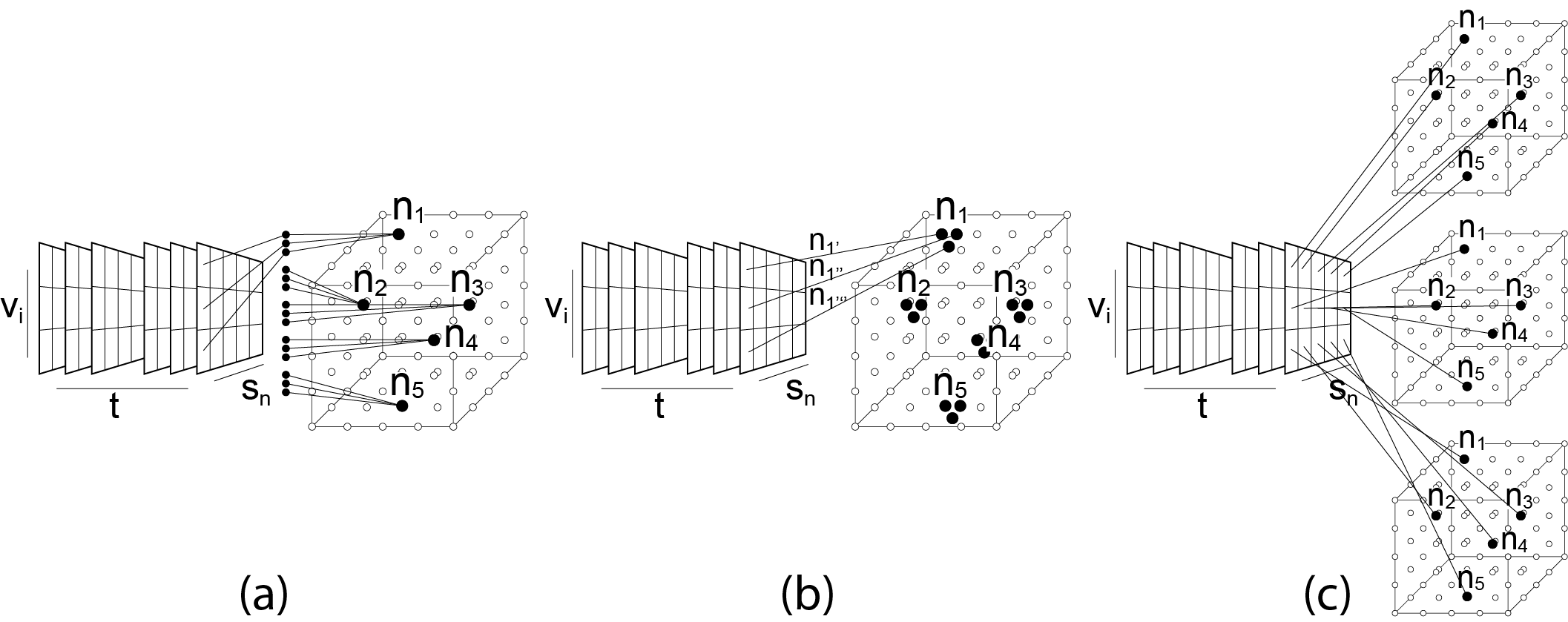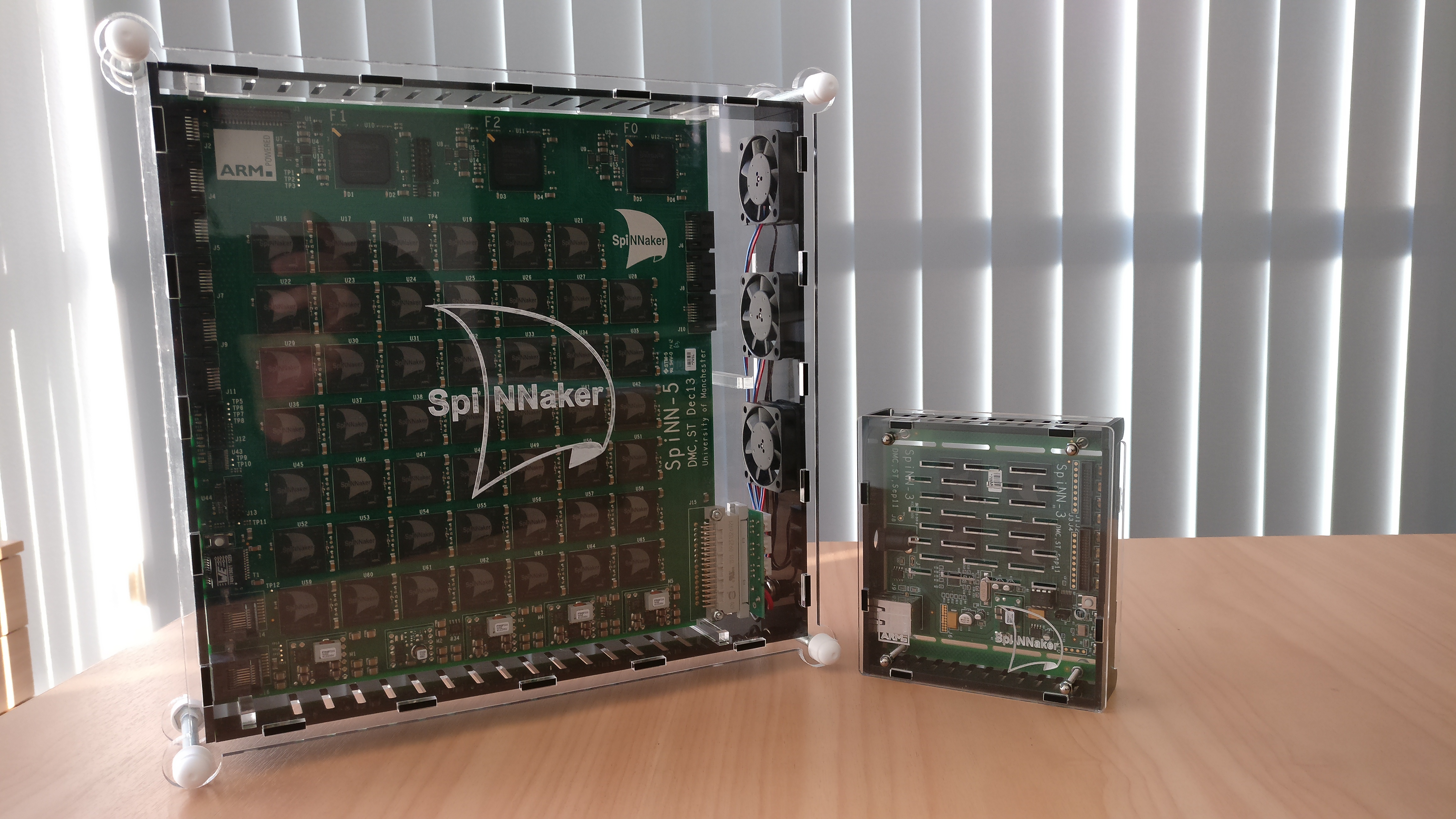NeuGroup
The NeuGroup is working on applications for the NeuCube, a generic system that needs to be tailored for particular applications.
Current projects
The lab is working on several projects, including:
The Brain-Like Artificial Intelligence (BLAI) is pioneered by Professor Nikola Kasabov and here it is applied for modelling multi-sensory data.
This project develops new methods and a system for multi-sensory predictive data modelling in a real time using spiking neural networks and more specifically - the NeuCube computational architecture. The system can be used for various applications where sensory information is measured in a real time, such as: environmental (e.g., seismic); ecological (e.g., climate; pollution); power energy (e.g., wind turbine data); health (patient sensory data for patient rehabilitation at home), and many more.
An increased interest on acquisition, processing and analysis of spatio-temporal stream data that arises from a set of sensors (sensor network) spatially distributed has emerged over the last decade.
Sensor networks have become an interdisciplinary subject including many fields such as wireless networks and communications, protocols, distributed algorithms, signal processing, embedded systems, and information management. They have important applications such as remote environmental monitoring, seismic activity, target tracking, etc.
Spiking neural networks (SNN), the third generation of neural networks, have been proved to incorporate temporal information in communication and computation like real neurons do. They have the potential to communicate and learn spatial and temporal information by sequences of spikes transmitted among spatially located synapses and neurons. They receive and send out individual pulses allowing multiplexing of information like the frequency and amplitude of sound. Both spatial and temporal information can be encoded in an SNN as locations of synapses and neurons, and time of their spiking activity, respectively.
Evolving spatio-temporal data machines (eSTDM), based on neuromorphic brain-like information processing principles, are multi-modular computer systems designed to deal with large and fast spatio/spectro temporal data using SNN as major processing modules. In this context, the NeuCube- as a generic and systematic framework- has being designed for any spatio-temporal stream data problems. The novel methods and algorithms allow modelling large and fast multisensory spatio-temporal data which contain diverse input variables captured by each element of the sensor network.

Multivariate input mapping approaches. Variable vi indicates the output that a sensor can provide, t represents the time, and sn indicates a node in the sensor network. Finally, ni indicates an input neuron which process the output of a sensor sn.
Related papers and benchmarking
The proposed methods and systems, when compared with traditional statistical and machine learning methods, showed superior results in the following aspects:
- Although traditional methods such as Support Vector Machines (SVM), Multilayer Perceptron neural networks (MLP), Bayesian methods and many more have utilised for studying temporal data, they are inefficient in capturing complex spatio-temporal relationships from stream data. On the other hand, NeuCube can map input variables into spatially located spiking neurons towards modelling large and fast on-line multisensory spatio-temporal stream data;
- NeuCube can map one or multiple input variables coming from each node of a sensor network into several SNN. This novel approach allows researchers to simultaneously perceive and analyse the patterns that each variable produces through different levels and combinations of multisensory spatio-temporal stream data;
- NeuCube can provide enough information to extract relevant knowledge of the system in contex.
See also some of the related papers:
- Kasabov, N. K. (2014). NeuCube: A spiking neural network architecture for mapping, learning and understanding of spatio-temporal brain data. Neural Networks, 52, 62-76.
- N. Kasabov, N. Scott, E.Tu, S. Marks, N.Sengupta, E.Capecci, M.Othman,M. Doborjeh, N.Murli,R.Hartono, J.Espinosa-Ramos, L.Zhou, F.Alvi, G.Wang, D.Taylor, V. Feigin,S. Gulyaev, M.Mahmoudh, Z-G.Hou, J.Yang, Design methodology and selected applications of evolving spatio- temporal data machines in the NeuCube neuromorphic framework, Neural Networks, v.78, 1-14, 2016. http://dx.doi.org/10.1016/j.neunet.2015.09.011.
- E. Tu, N. Kasabov, J. Yang, Mapping Temporal Variables into the NeuCube Spiking Neural Network Architecture for Improved Pattern Recognition and Predictive Modelling, IEEE Trans. on Neural Networks and Learning Systems, 28 (6), 1305-1317,, 2017 DOI: 10.1109/TNNLS.2016.2536742, 201
R&D system
For this project, an R&D system has been developed based on NeuCube. The system can be obtained subject to licensing agreement.
Developer
The NeuCube on Chip is a software system for the creation of large spiking neuron models in real time that run on the SpiNNaker multi-core system.
Brain-Like Artificial Intelligence (BLAI) is pioneered by Professor Nikola Kasabov and here it is one of its realisations.
The NeuCube on Chip is a software system for the creation of large spiking neuron models in real time that run on the SpiNNaker multi-core system developed by the University of Manchester group of Prof. Steve Furber.
Each SpiNNaker chip has 18 ARM968 cores; they are connected via an asynchronous packet switcher for faster communication. The system runs in real-time, which means that an interactive application that could propagate and change the synaptic weights on the fly could be implemented, this would not only speed up the model training but could also control the flow of spikes and modifications in the weights. The SpiNNaker natively implements a simplified form of STDP learning rule between its connections this adds advantage over software implementation.
NeuCube could take advantage of SpiNNaker machines unsupervised learning and speed up the learning process. Also, we could increase the number of neurons from thousands to millions.

The SpiNNaker chip
Related papers and benchmarking
The developed intelligent systems with the use of NeuCube and its software implementation on SpiNNaker, when compared with traditional statistical and machine learning methods, showed superior results in the following aspects:
- Better data analysis and classification/regression accuracy (by 10 to 40%);
- Better visualisation of the created models, with a possible use of VR;
- Better understanding of the data and the processes that are measured;
- Enabling new information and knowledge discovery through meaningful interpretation of the models.
See also some of the related papers:
- Kasabov, N. K. (2014). NeuCube: A spiking neural network architecture for mapping, learning and understanding of spatio-temporal brain data. Neural Networks, 52, 62-76.
- Kasabov, N., Scott, N. M., Tu, E., Marks, S., Sengupta, N., Capecci, E., Othman, M., Gholoami Doborjeh, M., Murli, N., Hartono, R., Espinosa-Ramos, J. I., Zhou, L., Alvi, F., Wang, G., Taylor, D., Feigin, V., Gulyaev, S., Mahmoud, M., Hou, Z. G., Yang, J. (2016). Evolving spatio-temporal data machines based on the NeuCube neuromorphic framework: design methodology and selected applications. Neural Networks, 78, 1-14.
R&D system
For this project, an R&D system has been developed based on NeuCube. The system can be obtained subject to licensing agreement.
Developer
This R&D system uses quantum inspired evolutionary algorithm for the optimisation of the NeuCube performance in three different phases: encoding, unsupervised learning and supervised learning. Also, this algorithm will be use as a part of personalise modelling to improve feature selection ability of NeuCube.
Quantum-inspired evolutionary algorithm (QEA) is a new optimisation technique which has combined quantum computing principles with evolutionary algorithms. QEA is a population-based algorithm which uses the concepts of quantum bits and superposition of states as a basic rule to search the problem space. The smallest unit of information in QEA is called quantum bit or qubit which has three states ‘1’ and ‘0’, or any superposition of the two states. QEA has a better diversity and convergence rate in comparison to other EAs because it uses qubit representation rather than numeric, binary or symbolic representations.

Geometrical representation of Qubit on Bloch Sphere
We use this powerful optimisation technique to optimize NeuCube performance in three different phases: encoding, unsupervised learning and supervised learning. Also, this algorithm will be use as a part of personalise modelling to improve feature selection ability of NeuCube.
Related papers and benchmarking
The proposed methods and systems, when compared with traditional statistical and optimisation methods, showed superior results in the following aspects:
- Better data analysis and classification/regression accuracy (by 10 to 40%);
- Better visualisation of the created models, with a possible use of VR;
- Better understanding of the data and the processes that are measured;
- Enabling new information and knowledge discovery through meaningful interpretation of the models;
- Significantly faster convergence.
See also some of the related papers:
- Platel, M. D., Schliebs, S., & Kasabov, N. (2009). Quantum-inspired evolutionary algorithm: a multimodel EDA. IEEE Transactions on Evolutionary Computation, 13(6), 1218-1232.
- Schliebs, S., Defoin-Platel, M., Worner, S., & Kasabov, N. (2009). Integrated feature and parameter optimization for an evolving spiking neural network: Exploring heterogeneous probabilistic models. Integrated Neural Networks, 22(5), 623-632.
- Schliebs, S., Kasabov, N., & Defoin-Platel, M. (2010). On the probabilistic optimization of spiking neural networks. International Journal of Neural Systems, 20(06), 481-500.
R&D system
For this project, an R&D system is being developed. The system can be obtained subject to licensing agreement.
Developer
Our research groups
The research and development work done by KEDRI's founding director, Professor Nikola Kasabov, and his team is organised into six areas of research.